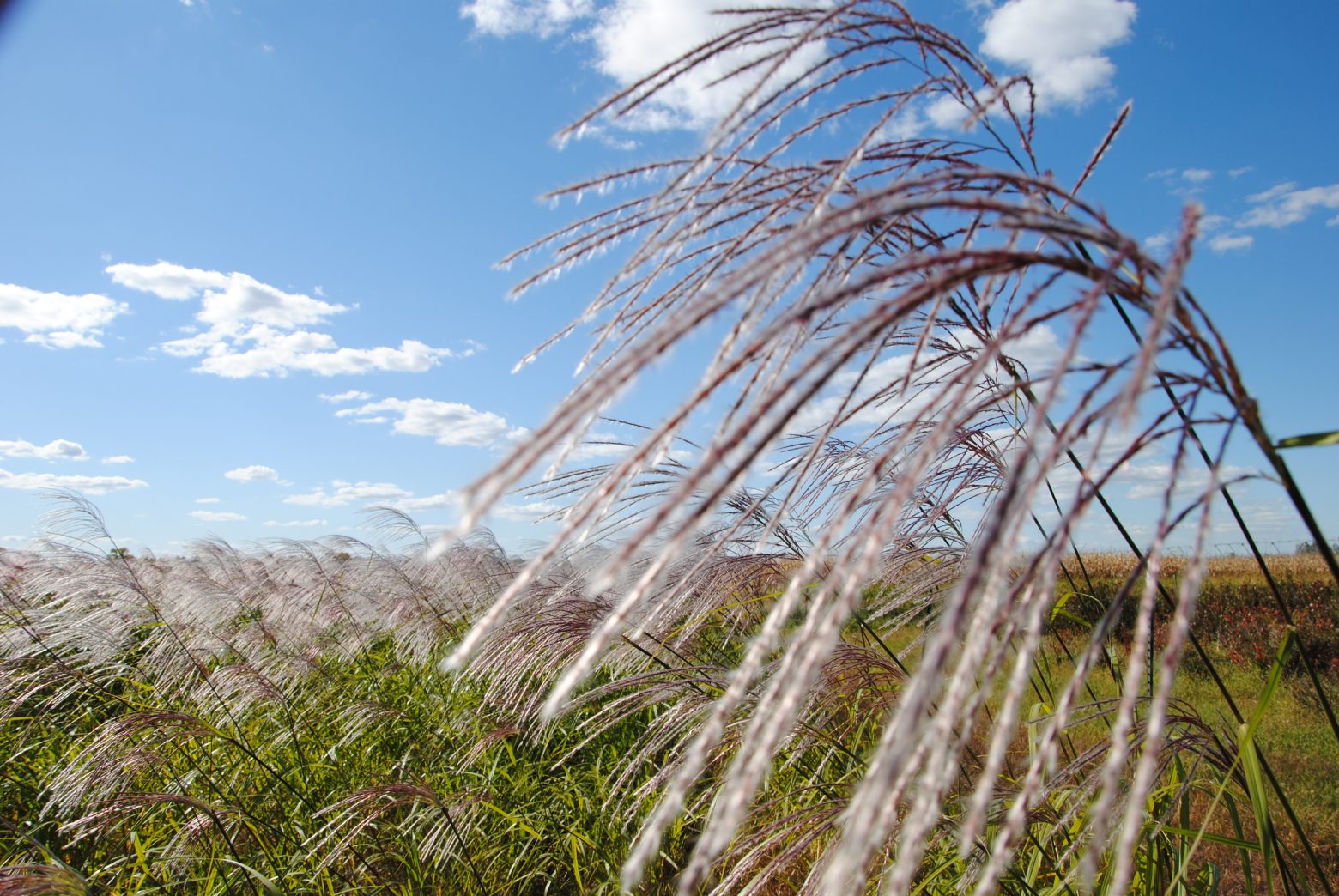— by Liz Morrison
 Imagine a Minnesota farm field of grass more than 10 feet tall. The spiky plants are as dense as a jungle and grow for at least 15 years with few inputs.
Imagine a Minnesota farm field of grass more than 10 feet tall. The spiky plants are as dense as a jungle and grow for at least 15 years with few inputs.
This strange-looking crop is Miscanthus x giganteus, a perennial grass from Southeast Asia that could be grown in central Minnesota for biomass energy. Researchers at Central Lakes College Ag Center in Staples are testing cold-hardy strains of miscanthus and developing best management practices for the new biofuel crop. The field trials are supported by the state of Minnesota’s NextGen Energy grant.
Meanwhile, AURI has developed a “densification” process to turn harvested miscanthus into solid fuel pellets. The pellets can be burned in biomass furnaces or co-fired with wood or coal.
The collaborative effort could lead to a new agricultural biomass industry in central Minnesota, says AURI Associate Scientist for Coproducts Al Doering.
Miscanthus in a northern climate
Central Lakes College Ag Center is doing some of the first U.S. field trials of cold-hardy miscanthus hybrids, which were developed for northern regions by Mendel Biotechnology, Hayward, California. Central Lakes has three acres of established plantings and will add another three acres this year.
Miscanthus could be a nice fit for central Minnesota agriculture, says Central Lakes College Ag Center Director Robert Schafer, who is leading the research.
Wadena and Todd counties have an abundance of sandy, erodible soils poorly suited to row crops. Miscanthus grows quite well in poor soil, and provides permanent cover on sensitive lands, reducing erosion and runoff. In more productive farming areas, like southern and western Minnesota, miscanthus could be planted in grass waterways and stream buffers to protect soil and water, Schafer adds. The cold-hardy cultivars had excellent over-wintering survival rates, even during the open winter of 2011-12, when there was little snow to insulate the plants.
In trials from 2009 to 2011 at the Staples research farm, miscanthus out-yielded other biomass energy crops, including switchgrass, wheatgrass, big bluestem, and a prairie grass blend. The top-yielding cultivar, Miscanthus x giganteus Nagara, produced about six tons per acre of biomass after the second year — three times the yield of the other perennial grasses tested. Ongoing plot trials at the research farm are evaluating fertilizer and water needs, longevity, and crop production methods. Researchers are also exploring how to terminate the crop, a non-native species whose invasion risk is unknown. The goal is to develop best management practices to guide northern farmers.
Miscanthus economics
The most promising immediate use for miscanthus is as a solid fuel pellet for commercial or industrial biomass burners, says Doering. He developed guidelines for miscanthus processing at AURI’s pilot plant in Waseca.
Miscanthus produces a durable, low-moisture fuel pellet with a density similar to wood pellets, Doering says. Miscanthus also has desirable combustion characteristics, says Ranae Jorgenson, AURI analytical chemist. The energy value is similar to wood pellets. And the ash content, though greater than wood, is quite a bit lower than other common types of ag biomass, such as corn stover.
Preliminary estimates put the cost of raising and transporting miscanthus and manufacturing fuel pellets at $95 to $150 per ton. That’s quite a bit more expensive than wood pellets, which have dropped in price due to a glut of forest products.
Compared to expensive corn, though, miscanthus pellets look like a bargain for corn stoves, Schafer says. Central Lakes College will be testing the miscanthus fuel pellets next winter in its commercial corn furnace, which heats the school’s greenhouse and 14,000-square-foot Ag Center.
“This project highlights the value of collaboration and the R&D service AURI provides,” Doering says. “We offer not only data and technical expertise, but demonstrations, too.”
